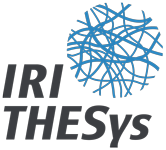PhD Project
The lack of energy efficiency regulation for buildings in Chile result in a housing stock with insufficient insulation, and therefor low indoor temperatures. This is part of the multicausal and complex energy poverty problem, which interrelate low incomes, high inequality, user’s preference for fuelwood, (being the only option for several families to tackle cold weather, as other fuels could be prohibitive in economic terms), families overspending in energy while other limit they spending in energy due to budget restrictions and prioritization of other items (hidden energy poverty). Also, is interrelated with the political, social and economic situation: a weak and fragmented state, a highly liberalized market, the inexistence of a middle class and high debt, and an energy system and real state developed under private criteria with poor government regulation.
So, these are the circumstances where the poor thermal quality of households happens. In Chile, first thermal regulation enters into force the year 2000, and despite this the standards are not enough for climatic conditions. Double glassed windows aren’t common even in cities with long winters and low temperatures, roofs are built mainly with lightweight material, and indoor humidity problems are usual. Poor insulation is not only felt in winter, but also summer and with heat waves in the last period, is becoming a major problem.
All this situation brings a policy making dilemma. By one side, future building can be better regulated, yes, but what to do with the remaining of house stock built? Today decision makers look up for designing of subsidies only for the lowest income segment of population and market or bank-based measures for the rest of existing homes through the provision of capital with credits. In a society with an inexistent middle class and high in debt, policy making needs to look beyond market-based solution, as thermal comfort and emotional relationship with housing are both particularly shaped by social, cultural, economic, political, and infrastructural features at the historical and contextual level, as well as preferences and expectations about housing, and indoor and outdoor practices, skills, knowledge, and behaviors.
What are the dynamics of dwelling a cold or hot house? What are the practices related with thermal comfort? What are the practices related with thermal improvement of housing? My aim is to understand How thermal comfort practices help people fit to a social, economical and institutional infrastructure, and how it is interrelated to practices for retrofitting the envelope or environment.
Project financed by the scholarship: DAAD/ Becas Chile



